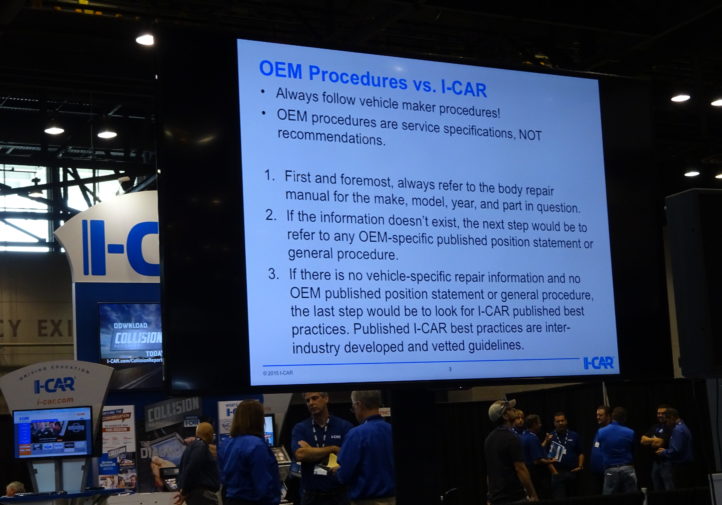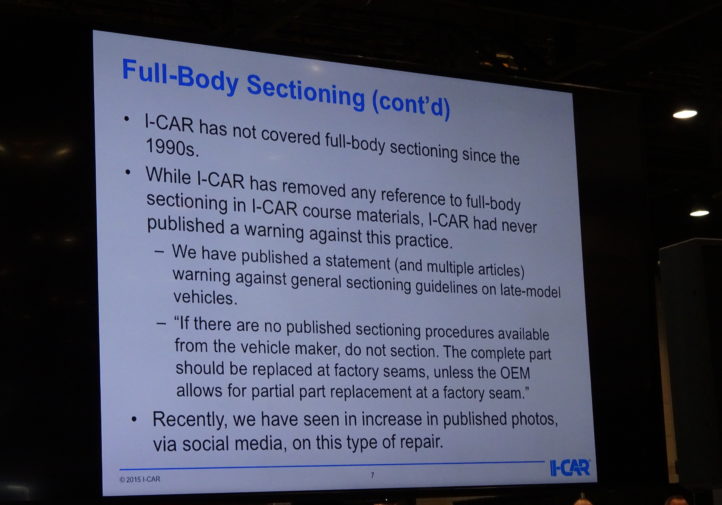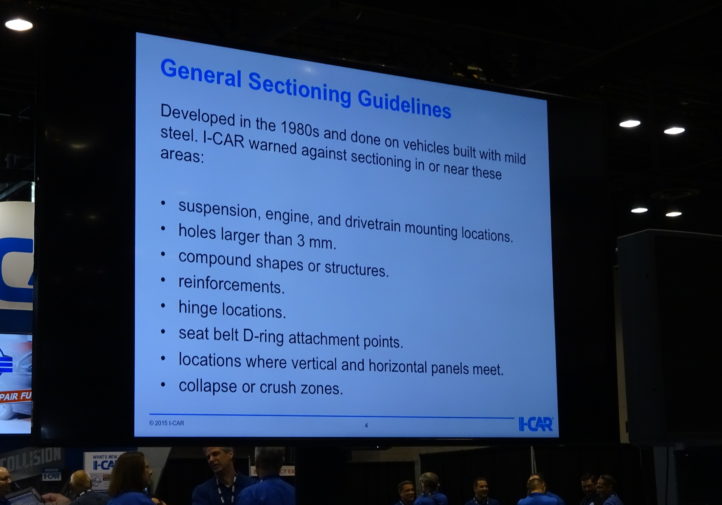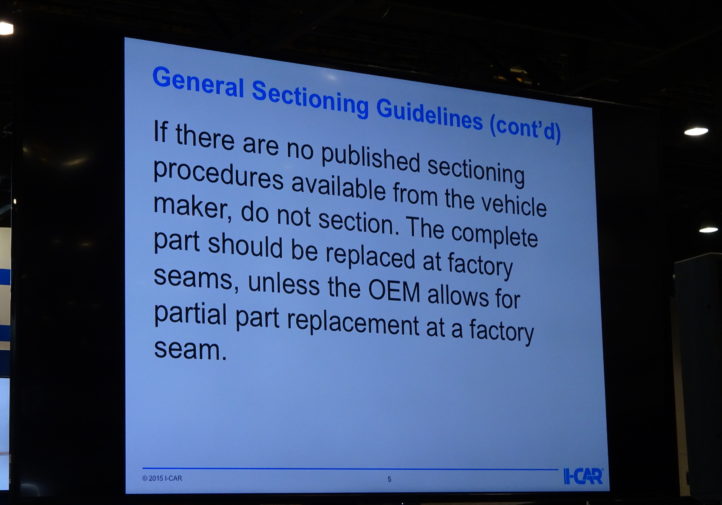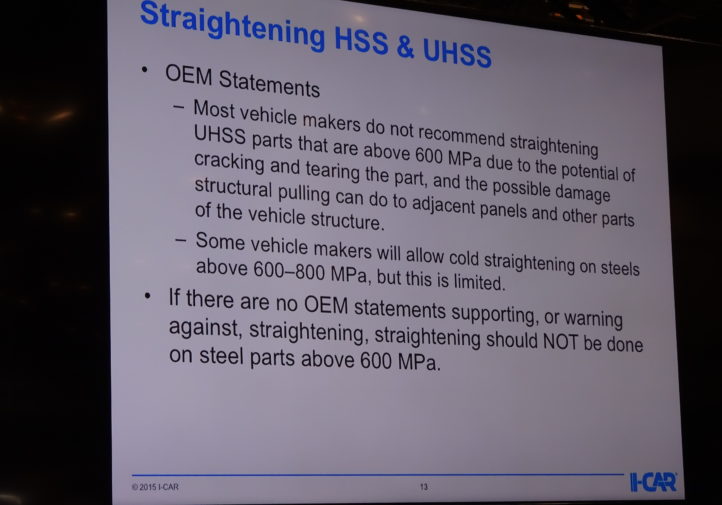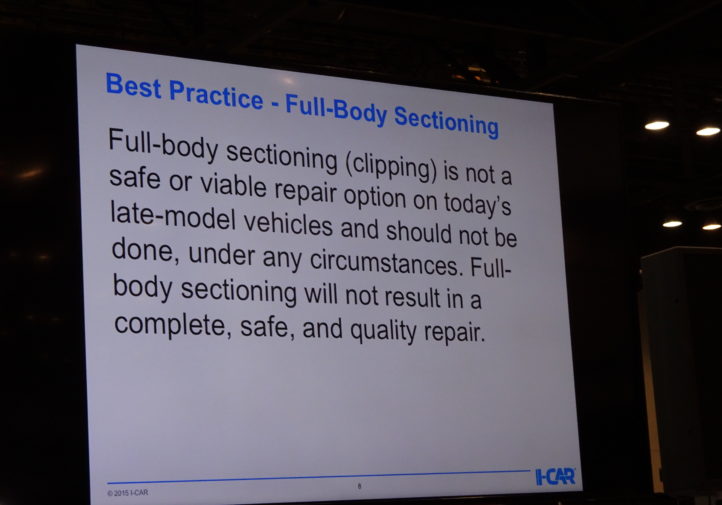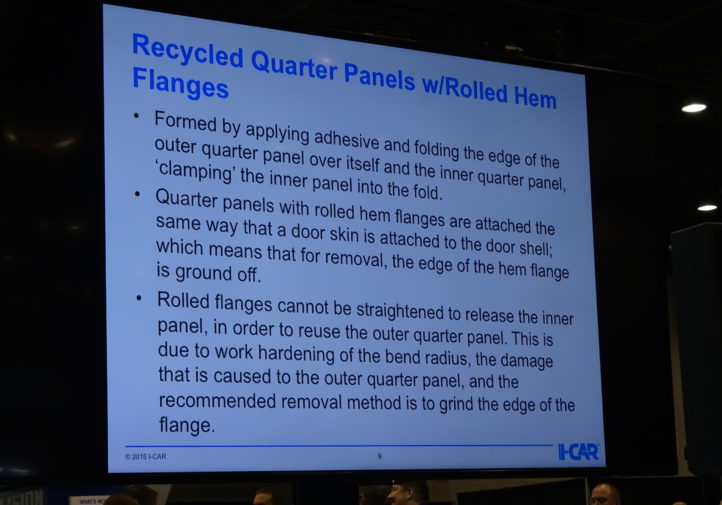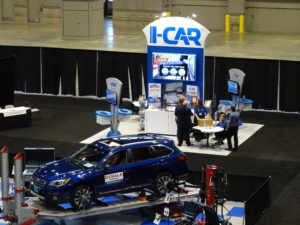
Think you know what ‘I-CAR says’? See if you’re right with our coverage
By onAnnouncements | Associations | Business Practices | Education | Market Trends | Repair Operations | Technology
Collision Hub and I-CAR recently devoted a live show at NACE to debunking all of the “I-CAR says” myths persisting in the industry.
Given the seriousness for customers of collision repairers and insurers getting these technical points wrong, we split our coverage into separate articles for each topic on which I-CAR industry technical relations director Jason Bartanen and Collision Hub CEO Kristen Felder corrected the record.
For those who missed one of the earlier installments, here’s the video, links and summaries all four “What does I-CAR say?” articles, and a gallery of some of the key slides from the presentation.
Use it to teach yourself, give your customers a proper repair, correct those false I-CAR prophets out there.
I-CAR: OEM procedures ‘service specifications, NOT recommendations’
Bartanen said I-CAR’s stance is that shops should first follow OEM repair procedures. If those don’t exist, a repairer should look to OEM position statements or other documentation for guidance.
If neither of those OEM options available, then use an I-CAR “published best practice,” he said. (Even then, there’s still a chance to tap an OEM for advice using the “Ask I-CAR?” service as a middleman.) More.
I-CAR says no recycled outer quarter panels with rolled hem flanges
“You wouldn’t put a recycled door skin on,” Bartanen said, and the same logic applied to outer quarter panels with rolled hem flanges. While it might not be as much of a safety issue as a workmanship and quality issue, it still shouldn’t happen, he said.
“Outer quarter panels with rolled hem flanges are not candidates for recycled part usage,” I-CAR wrote. “This is due to the removal process required; alternate removal methods will result in a work-hardened flange that may fail.” More.
I-CAR: Follow OEM on sectioning or don’t do it — and don’t ever clip
I-CAR’s guidance is that if no OEM repair procedures exist, “do not section. Period,” Bartanen said, referencing an I-CAR slide.
“If there are no published sectioning procedures available from the vehicle maker, do not section,” I-CAR said in the slide. “The complete part should be replaced at factory seams, unless the OEM allows for partial part replacement at a factory seam.”
Full-body sectioning, or “clipping,” originally permitted under I-CAR’s 1980s guidelines, should have long ago been rendered impossible by the restrictions contained in those guidelines, Bartanen said. But the practice continues, leading I-CAR to declare clipping “should not be done, under any circumstances” for late-model vehicles. (Which Felder and Bartanen indicated means all vehicles dating back to sometime in the 1990s.) More.
I-CAR: Old ‘kink versus bend’ rule obsolete; ‘We don’t work on mild steel vehicles anymore’
Given higher-strength steel vehicles, the “kink versus bend” rule is largely obsolete. I-CAR’s new guidance is “If there are no OEM statements supporting, or warning against, straightening, straightening should NOT be done on steel parts above 600 MPa.”
“If the OEM states that a certain metal or part shouldn’t be straightened, then that part should be replaced (even if it’s only bent). Follow the OEM repair information,” I-CAR wrote in an article published the same day as the event. More.
More information:
“Repair University Live: What does I-CAR say?”
Collision Hub YouTube channel, July 27, 2017
“Always Follow Vehicle Maker Procedures”
I-CAR, July 7, 2016
“Update: Are General Sectioning Guidelines Still Applicable?”
I-CAR, Oct. 30, 2015
“Full-Body Sectioning Should Not Be Done”
I-CAR, July 24, 2017
“I-CAR Best Practices: Recycled Outer Quarter Panels w/Rolled Hem Flanges”
I-CAR, July 21, 2017
I-CAR, July 27, 2017
Images:
I-CAR’s booth is seen at NACE 2017. (John Huetter/Repairer Driven News)
I-CAR’s guidance on sectioning is that if no OEM repair procedures exist, “do not section. Period,” I-CAR industry technical relations director Jason Bartanen said, referencing this I-CAR slide. (John Huetter/Repairer Driven News; photo of I-CAR slide)
I-CAR says its 1980 mild steel sectioning guidelines should not be used for modern collision repair. And even those carried a list of restrictions that would preclude the sectioning anyway. (John Huetter/Repairer Driven News; photo of I-CAR slide)
I-CAR opposes full-body sectioning (“clipping”), a slide at NACE 2017 reiterated. (John Huetter/Repairer Driven News; photo of I-CAR slide)
I-CAR had in the past implied clipping should not be done, but the practice continues. (John Huetter/Repairer Driven News; photo of I-CAR slide)
I-CAR last week and again Thursday in a NACE presentation (pictured) put to bed the idea that recycled outer quarter panels with rolled hem flanges could be used. (John Huetter/Repairer Driven News)
The old “kink versus bend” I-CAR rule has been largely replaced with this guidance given the predominance of stronger steels, I-CAR industry technical relations director Jason Bartanen said July 27, 2017. (John Huetter/Repairer Driven News; photo of I-CAR slide)

